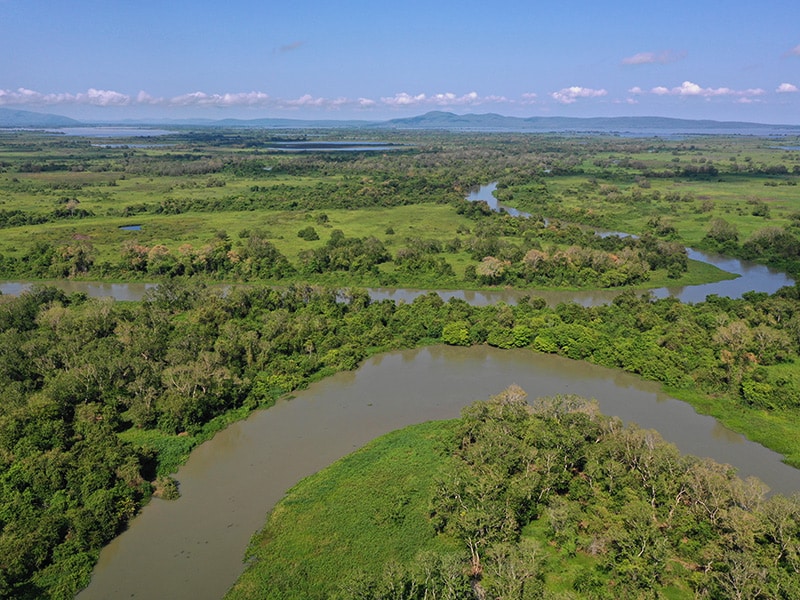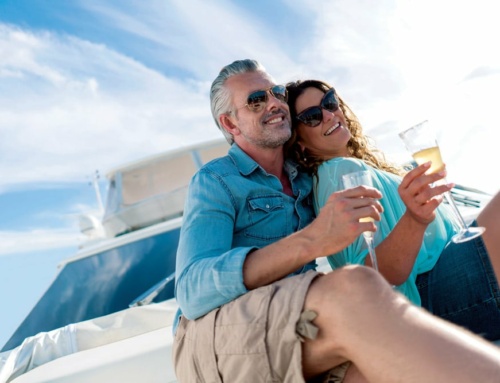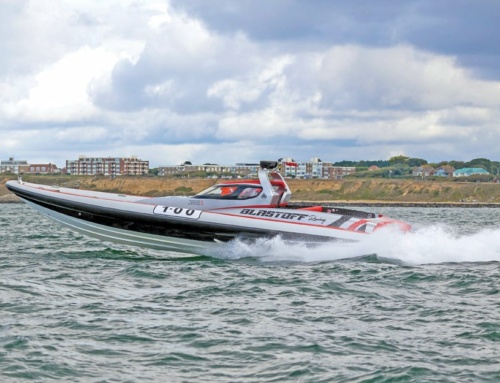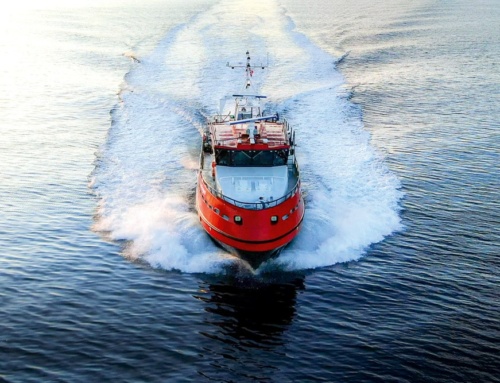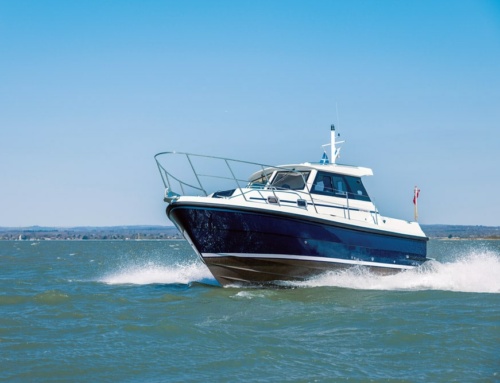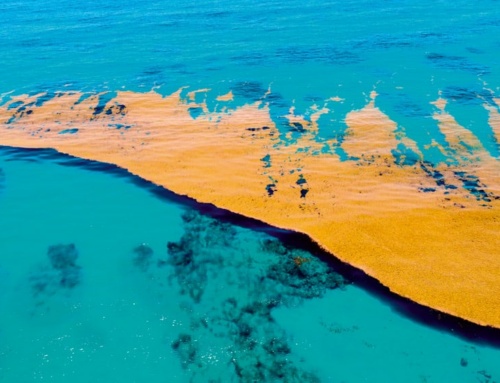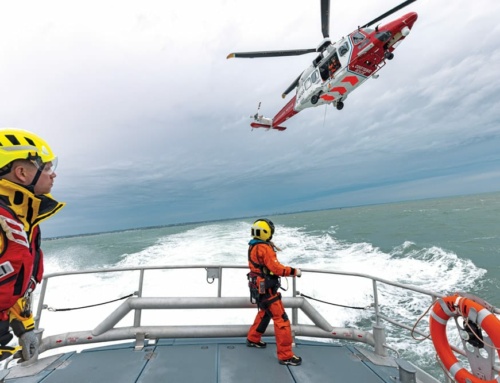Andy Leemann shares the remarkable story of his and his various teams’ latest extraordinary adventure, across four countries and along eight rivers, in the face of some of the many dangers nature can throw at you ‒ the Ascending South America River Expedition …
Photography: Apal Singh, Klaus Kranewitter and Patricia Torales
Part One
Finally we were all there in Buenos Aires on the threshold of our dream becoming a reality. Getting there meant being thousands of miles away from our homes spread across Switzerland, Germany, India, Argentina, the Netherlands, Denmark and Italy. Arriving at this point had been an odyssey of thousands and thousands of emails, countless long-distance phone calls and Skype conversations across the continents, dozens of flights, some connecting some not, and at times permits that had ensured passage would be arriving well after the flight had departed. But most of this was now behind us.
Crew
Andy Leemann Switzerland Expedition leader
Alfredo Cucciani Argentina Logistics
Stefano Corruzzi Italy In charge of the boats
Apal Singh India Photography and Film
Patricia Torales Argentina Photography
Klaus Kranewitter Germany Video and drone
Paul Schneider Germany In charge of kitchen
Moritz Schneider Germany Crew
Gaja Formels Germany Crew
Edwin
Hiemstra Netherlands Crew
Luiz Kumpel Brazil Logistics
Being a crewmember is the most important and difficult of tasks, and if a team can get things right, success and a rewarding sense of teamwork will follow. Humans are in the mix, and each team member brings along all of their baggage ‒ for the good and for the less good.
We worked well as a team and managed the five weeks pretty successfully as we depended on each other 24 hours a day, although there’s no denying we had our struggles, our highs and our lows.
As a leader I must inspire a high level of commitment and performance. But as a human being it is not always easy to deal with the pressure of the unknown and the expectations everybody has of me. At the beginning of the trip I sometimes felt too much pressure on my shoulders for various reasons. I also tend to expect too much from my crew. Crew changes are always healthy, but it is also sometimes difficult to adjust fast enough to the daily grind of the old team.
The aim of the expedition was to travel through four countries: Argentina, Paraguay, Bolivia and Brazil. The team’s journey was to cover 6800km in 72 days along eight different rivers, from the delta of the Paraná River in Buenos Aires, Argentina to Manaus, at the heart of the Amazon River, in inflatable boats and capture as much of the unique natural landscape, flora and fauna as possible. We focused on the diverse cultural traditions on the banks of these rivers, documenting the impact of climate change and environmental degradation on these areas, and the experiences of the communities living there.
The next day we bought food and supplies. Andy took a final look at the equipment and safety gear and the crew carried on. This unending task of tying up loose ends and dealing with surprises seems to exponentially grow when preparing for expeditions. Our boats and engines were finally ready.
Paperwork
After having no concrete news about our boats’ certificates after five months of waiting, we finally got the paperwork done on 6th September thanks to Gustavo from Hard Craft, and so we kicked off on the 7th. It had been a nightmare dealing with the authorities in Argentina, so all we wanted was to get off and be on the mighty Paraná River.
Anyone who has ever organised an expedition will know the procedure. Excitement, chaos, heartache, hard work and wow! … we were ready to leave. The start was hectic ‒ packing the boats, organising the crew, tending to friends and visitors, and trying to control the emotions. But eventually, we set off from San Fernando to our first destination.
Stage 1: Buenos Aires to Asunción ‒ 1522km
We cruised along beautiful channels to reach the huge Paraná River, our river road for the next 1150km. The Paraná River runs through Brazil, Paraguay and Argentina. Among South American rivers, it is second in length only to the Amazon. It merges first with the Paraguay River and then further downstream with the Uruguay River to form the Río de la Plata, and discharges into the Atlantic Ocean.
Navigating
The weather was cold and the current stronger than expected, so it was not easy with the heavily loaded AB Inflatable 13ft RIBs driven by 40hp outboard engines to cover the planned daily mileage. We had excellent marine charts, but with our small 4.30m RIBs it was better to navigate in protected waters than to follow the shipping channels and face the waves, the current and the daily thermal winds.
Fuel
On the second day the lesson was learned quickly when we were running out of fuel just 5km before the safe port of San Nicolas. Luckily some harbour pilots had a spare 20 litres and saved our day. My calculation was 2.5km per litre, but we had to correct that to 2.2km.
Camps
For the first few days we camped mostly in Club Náuticos, where the people had big hearts and helped with whatever needs we had. People living on the rivers are a global family and the Argentinians were just wonderful.
Cash
The biggest problem was making sure that we had sufficient fuel and enough cash to pay for all our expenses. Changing money was a daily challenge, since the country had just gone into a financial crisis and often the shop owners would rather not sell than lose money!
Landscape
In the Pre-Delta National Park in Argentina, through which the river runs, there are nearly 200 species of fish and almost as many types of birds as well. We enjoyed the pure nature along with the sometimes heavy industry along the banks, and the immense shipping traffic.
Problems with authorities
Reporting into the coastguard in every bigger town in Argentina was a must, but we had all the correct documents and so we were not worried until we reached Bella Vista. We had been warned before by other captains that the Prefectura in this beautiful town was not very friendly. We reported as usual and all was OK until we received a visit from a heavily armed group of army officers at 2:00am in the morning for a passport control. The next day they visited us again and told us that we were not allowed to leave the port. We did not know what was going on, but we realised that something was not right. Negotiating and trying to understand was one thing, but why this commander, who was a lady, was so unfriendly in dealing with us was very hard to understand.
We asked our contacts in Buenos Aires for help, and finally, after being held for over 24 hours, we received the papers we needed to leave the next morning. Some higher-ranking officials had got involved and sorted out the problems.
Paraguay River
North of Corrientes we reached the confluence with the Paraguay River, a major river in south-central South America running through Brazil, Bolivia, Paraguay and Argentina. It would be our river road for the next 2000km to the Brazilian state of Mato Grosso until Cáceres.
The river boasted clear water and a strong current. The nature along the river became
more beautiful and the towns and villages fewer in number. We had to stick to
the left side to stay in Argentinian waters since the river forms the border
with Paraguay.
We found some very pretty camps and the journey became more and more challenging as we progressed ‒ lovely nature, wonderful cruising but also challenging navigation. The real fuel problem started here, as we had to find the supply of 200 litres we needed for a day’s 150km with three boats. The problem was that the navy did not allow spare tanks, but talking to locals, we found out that nobody cared about these rules. That helped us a lot since we were able to carry up to 400 litres with us.
Crossing the border into Paraguay was, as usual, a long haul with Argentina’s officials, but this was followed by a short and friendly meeting with the Paraguay Customs and Immigration. They took care of our fuel issue, exchanged money and gave us a place on their boat to sleep.
Danger
It is the same story anywhere. The Argentinians warned us that as soon as we reached Paraguay it would be dangerous and that they would rob our boats, rape and kill us if we did not have guns to defend ourselves. The Paraguayans will tell you the same, and the Brazilians will say the same about the Bolivians. The story goes on that there are pirates everywhere, and their advice is that if the boats are not fast enough, it is better to surrender and give them anything they want.
My advice to the crew was always that we have to be careful, but in my 60,000km of river expeditions nothing has ever happened. In camps at night we switched off our lights if a boat was approaching. If the boats were moored more than 50m away from our camp, somebody would sleep with the boats. The boats were always with a crewmember.
One of the highlights on the way to Asunción was the frequent sighting of river dolphins jumping out of the water. Along the route we also saw lots of aquatic birdlife, which is rather unusual, considering that there is so much boating and fishing activity on the river.
Asunción is a big city. On our first night we were invited by a yacht club to stay on a campsite. It was a night of anxiety and very strong winds gusting up to 65 knots. The ferry dock with the ferry and our boats went drifting and we had to rescue the watchmen from the dock. But finally the tired souls got the better of the angry rain gods and before long the sound of snoring was drowning the echoes of the fading storm.
Most of the crew left early in the morning to visit the famous Iguazu Falls, one of the planet’s most awe-inspiring sights. The cascades are simply astounding and everyone was just overwhelmed when they met us the next day.
Apal, our cameraman, could not join us in Paraguay because as an Indian he always has to apply and wait for a visa. Edwin and Luiz joined the crew and had to adjust to the group quickly.
| STAGE 1: Buenos Aires to Asunción ‒ 1522km, average 100km per day | |
| 01.Sept.18 | Arrival in Buenos Aires |
| 02.Sept.18 | Arrival of crew, prepare equipment, San Fernando |
| 03.Sept.18 | Arrival of crew, prepare equipment, San Fernando |
| 04.Sept.18 | Preparing for the trip, RIBs, food, etc., San Fernando |
| 05.Sept.18 | San Fernando–Zarate |
| 06.Sept.18 | Zarate‒San Nicolas |
| 07.Sept.18 | Zarate‒San Nicolas |
| 08.Sept.18 | San Nicolas‒Rosario‒Bella Vista |
| 09.Sept.18 | Bella Vista‒Santa Fe |
| 10.Sept.18 | Santa Fe‒Paraná‒Villa Urquiza |
| 11.Sept.18 | Villa Urquiza‒La Paz |
| 12.Sept.18 | La Paz-Esquina |
| 13.Sept.18 | Esquina‒Goya |
| 14.Sept.18 | Goya‒Bella Vista |
| 15.Sept.18 | Bella Vista‒Corrientes |
| 16.Sept.18 | Corrientes |
| 17.Sept.18 | Corrientes‒Paso de la Patria‒Pilar |
| 18.Sept.18 | Pilar‒Formosa/Alberdi, border crossing |
| 19.Sept.18 | Reach Asunción |
| 20.Sept.18 | Asunción, trip to Iguazu |
| 21.Sept.18 | Asunción, return from Iguazu |
Stage 2: Asunción to Cáceres ‒ 1973km
Expectations for this second stage were high as we approached the Pantanal, a natural region encompassing the world’s largest tropical wetland area. It is located mostly within the Brazilian state of Mato Grosso do Sul, but it extends into Mato Grosso and portions of Bolivia and Paraguay. Various subregional ecosystems exist, each with distinct hydrological, geological and ecological characteristics.
The Paraguay River was still immense, but we found more and more beautiful little short cuts with lots of birdlife and caimans.
We met very helpful people along the river and we managed the 480km to the Brazilian border without any major problems, but the heat during the day became tough, and we had to force ourselves to drink water and cool down by just having a swim. Slowly but surely, the mosquitoes became a plague.
Our lovely crewmember Patricia had to leave us just before the border to go back to Buenos Aires. The border crossing itself was a huge surprise to all of us. A lady in a hardware shop stamped our passport ‒ she works in the morning as an immigration officer and in the afternoon here in the shop. Luckily she had the stamps in her bag and so saved us a long journey to the immigration office.
On the Brazilian side we met our friend and expedition veteran Apal again, did the paperwork and off we went to explore the unknown southern Pantanal and the 500km to our next big destination, Corumbá. My biggest worry as usual was finding fuel and cashing money, but there was always a solution and by now we were filling up to 400 litres whenever fuel was available. The flexible Orca tanks became our babies and proved to be the key to navigating. Every kilometre we dived deeper into this wonderful natural paradise of the Pantanal.
Corumbá is a typical tropical-style city with lots of activities and is also a border town to Bolivia. We had an invitation from Colonel Rabelo and his lovely wife Marcia at Moinho Cultural Centre, all organised by our crewmember Luiz Fernando Kumpel, a Brazilian businessman who helped us a lot with logistics. We enjoyed the well-organised school and could not believe that an education establishment of such a high standard would exist in the middle of deepest Brazil.
After two days of well-deserved rest and mending our wounds, we undertook the next 350km to Acurizal, an eco-farm where 400 litres of fuel and an invitation to stay awaited us. With mixed feelings about what to expect and what lay ahead of us, we started the new adventure.
The first night we stayed at Instituto Acaia, a wonderful NGO that works with
the education of children of the Pantanal, and we enjoyed a beautiful event
with the kids. We slept in a dormitory and ate great food with the superb kids
and teachers.
We navigated on before meeting Adrian, a local guide, who was waiting for us and invited us for a cruise to a very special place, the Amolar Mountain Ridge, where two small rivers join and crystal-clear water streams can be found. We swam with piranhas and caimans and enjoyed the place like little kids.
Our friend and guide Adrian invited us to his house, where his wife was waiting with a typical Brazilian dish, comprising fish, beans, rice, pasta and a bit of salad. We stayed the night with them and enjoyed the beauty of the place.
The next morning he and his family guided us through wonderful wetlands and
small channels to Acurizal.
We had tropical rain and strong winds, but everybody was just happy and
thankful for this awesome experience.
Acurizal
was a very special place, and the caretaker was a humble and helpful man. As
promised, Colonel Rabelo
had the 400 litres of fuel ready for us, and we were given a little hut in which
to stay dry and avoid being attacked by the millions of mosquitoes.
Douglas Trent, our partner, navigated 460km down from Cáceres to meet us and help with logistics in readiness for the final stage. And there was a big surprise: his boat had plenty of food for us and an icebox full of cold beer.
Health
We extended the stay for a second night just to recover health-wise. The sun and the humidity, the endless torture of the millions of mosquitoes and the water quality had finally taken their toll on all of us. We realised that yes, paradise exists, but the price is very high, and that is why there is very little local population, and we had not seen gringos for weeks. Mosquito repellent, which should be effective for 10 hours, was useless after 10 minutes, and the clothing was not helping since these little blighters just sting through it. The result of all this and the 3000km we had in our bones manifested itself in dehydration, fevers and not feeling well.
Acurizal was a great place to lick our wounds. The RIBs were guarded by two caimans, and behind the little house we had a 3m anaconda eating the rats. All around there where monkeys, parrots, piranhas, capybaras, tarantulas etc., and of course, pure nature.
For the rest of the 450km to Cáceres we enjoyed the company, know-how and support of Douglas Trent and his crew Wagner. Both were on their home terrain and knew every corner of this beautiful Pantanal, having spent time spotting jaguars and the wildlife in general for many years.
It was like living in a zoo, and the caimans, the capybaras, the aquatic birdlife and the stories about jaguars were all absolutely amazing. The animals just stared at us out of curiosity and were not really afraid of human beings, since hardly anyone comes to this place.
The night camps had become a mosquito nightmare, and so we just wanted to get to Cáceres to escape from the plague. As I said before, paradise has its price.
Arriving in Cáceres was a once-in-a-lifetime event. Hundreds of children were there to welcome the team. Jussara and Douglas with their NGO ‘Bichos do Pantanal’ organised a wonderful event with the school, and local dancers performed some typical rhythms of the Mato Grosso.
The team was high on impressions, which we carried with us for the last 3500km. Tears flowed and emotions ran high. We had completed the first half of the expedition in style.
The moment of saying goodbye to most of the crewmembers is always heart-breaking. The new crew was expected the next day ‒ we were ready for stage 3.
| Stage 2: Asunción to Cáceres ‒ 1973km, average 116km per day | |
| A[SB3] sunción‒Puerto Murtinho, 480km | |
| 22.Sept.18 | Asunción‒San Pedro de Ycuamandiayu |
| 23.Sept.18 | Asunción‒San Pedro de Ycuamandiayu |
| 24.Sept.18 | San Pedro de Ycuamandiayu‒Concepción |
| 25.Sept.18 | Concepción‒Puerto Pinasco |
| 26.Sept.18 | Puerto Pinasco‒Puerto Murtinho, Brazilian border |
| Puerto Murtinho‒Forte Coimbra, 333km | |
| 27.Sept.18 | Puerto Murtinho, border crossing |
| 28.Sept.18 | Puerto Murtinho‒Fuerte Olimpo |
| 29.Sept.18 | Fuerte Olimpo‒Bahia Negra (big town) |
| 30.Sept.18 | Bahia Negra‒Forte Coimbra, fuel with Colonel Rabelo |
| Forte Coimbra‒Corumba, 205km | |
| 01.Oct.18 | Forte Coimbra‒Corumba |
| 02.Oct.18 | Corumba, events by Luiz |
| Corumba‒Acurizal, 350km | |
| 03.Oct.18 | Corumba‒Vista Bella[SB4] |
| 04.Oct.18 | Vista Bella‒Lago Gaiba, Puerto Quijarro, Acurizal. Douglas joined the expedition |
| 05.Oct.18 | Acurizal‒Cáceres, 465km |
| 06.Oct.18 | Lago Gaiba, Puerto Quijarro‒Porto Conceicao |
| 07.Oct.18 | Porto Conceicao‒Bracinho Hotel Bahiazinha |
| 08.Oct.18 | Bracinho Hotel Bahiazinha‒Cáceres |
| 09.Oct.18 | Cáceres: event by Douglas, disinfect boats, new crew joining the team |
| 10.Oct.18 | Cáceres, prepare boats for road transport. |
Part Two
Cáceres to Manaus, 3300km, Stages 3 and 4
The first two stages of the 3360km from Buenos Aires to Cáceres we mastered bravely, and it was our midway stop where we changed river systems that obliged us to sterilise the boats and make sure that we did not bring back with us the golden mussel, which is a terrible threat to all rivers worldwide and has become an invasive species found in the Amazon water system.
Stage 3: Vila Bela to Guajará-Mirim ‒ 1450km
Crew
- Andy Leemann Expedition Leader
- Stefano Corruzzi Co-leader
- Apal Singh Photographer and media
- Edwin Hiemstra Crew
- Wenka Booij Crew
- Sijbrand Booij Crew
- Steen Christensen Crew
- Paul Boehler Crew
- Antonio Pages Crew
Only Apal, Stefano, Edwin and I remained from the previous crew. The new explorers, Steen, Wenka, Brando (Sijbrand), Paul and Toni (Antonio), worked together as a perfect team. We didn’t need much time to adjust to each other. Wenka, as the only woman, brought a feminine touch to the group of men, so we softened our language a bit and discovered very quickly that in many ways she was better than us, and never complained about the hardship we were all experiencing.
Land transport
We had to transport the boats for 320km by truck to Vila Bela da Santíssima Trindade. The city is located on the upper Guaporé River close to the border with Bolivia. Today, because most inhabitants descend from former African slaves, the town creates the impression of a town in the African jungle rather than one in the Amazon jungle.
Guaporé River
The Guaporé Riverflows through the central-western region of Brazil. The river rises in the Serra (mountains) dos Parecis in Mato Grosso state, Brazil, and loops southward, westward and then north-north-westward past Mato Grosso city. I have not seen a river (which has hardly been explored) running through untouched jungle with such elegance and solitude before. We were prepared for a hard trip diving into the unknown, but in this clear water we had new adventures day after day and always camped in wonderful places.
We managed the 390km from Vila Bela da Santíssima to the Pousada Entre Rios well, and even got an invitation from the owners of the pousada to rest there for two nights and enjoy their hospitality. We had an awesome stay there.
The navigation
The next 1000km became more difficult and on one occasion we became stranded on hidden sandbanks. But this sort of navigation keeps the adrenalin flowing and the crew on its toes. After entering the Río Verde, we continued north-westward along the border between Bolivia and Brazil and we reached the Mamoré River above the town of Rodrigues Alves. These beautiful rivers flow through a region of tropical rainforest, and we visited settlements of Indians and mestizos along the banks ‒ all really friendly and helpful people.
Fuel
Fuel, our biggest worry, was always somehow available in the bigger villages due to the border with Bolivia and the flourishing smuggling between the countries. Our fuel consumption got 30% better navigating with the current, and we covered 450km with the two 70L flexible Orca fuel tanks per boat.
Dangers
The dangers in the jungle were not necessarily those we expected. A sleeping explorer is more likely to be drowned by rapidly rising floodwaters than killed by a predator. There were certainly some terrifying creatures, including venomous snakes, piranhas, jaguars and enormous caimans, yet, as with most animals, even these fearsome predators preferred to keep well away from us.
My experience of traveling and leading expeditions in Africa, South America, Alaska and Asia gave me the confidence to keep my team out of trouble. Every day we talked about possible danger, and life jackets were a must. From my experience, cuts, scratches and open mosquito bites are far worse if not immediately attended, as infections can be terrible in the jungle far away from any medical facility.
Food
We had supplies for three to five days with us as we were prepared not to find much in this thinly populated jungle. To our surprise, in every settlement there were women cooking for us making a dollar on the side. So instead of losing weight, we almost became fat!
History
Historically,the region has witnessed numerous frontier conflicts between the Spanish and the Portuguese, and the struggles of both with hostile Indians. Forte Príncipe da Beira, constructed near the confluence of the Guaporé and the Mamoré in the late 18th century, is a reminder of this era.
The river conditions
The water level is historically low, and so we had various sections where navigating became very difficult in low water and rocky ground. Our boats and engines were the only (and most precious) means of transport. We did well and got through these sections without great damage. The river took from us a couple of propellers, and that was it.
Camps
The camps on this forgotten river were just amazing, and we were always bouncing between Bolivia and Brazil, asking ourselves: ‘In which country shall we sleep tonight?’ We had to stay on dry land to make sure that the mosquitoes were bearable. We stayed in small villages, farms or under the protection of big trees in our tents. In one of the places we met fishermen from Bolivia. They were happy to show us a couple of hidden spots or lagoons where the fish were trapped because of low water. It’s quite an adventure being so deep in the bush with locals, knowing where to expect danger ‒ piranhas are aggressive when they are trapped and there were lots of caimans all over the place, not to mention the snakes! The guys had guns in case of jaguars.
The Guaporé River had clear water in contrast to the brown silt-laden Mamoré. For several miles below their juncture, the identity of the two streams was clearly visible. The last stretch to Guajará-Mirim was an exciting ride, sharing the borders with these two wonderful countries and friendly people like the Indians, gold miners, adventurers, farmers and seafarers.
Stage 3: Vila Bella to Guajará-Mirim ‒ 1450km, average 105km per day
11.Oct.18 Road transport to Vila Bela da Santíssima Trindade, 280km
12.Oct.18 Prepare the boats: Vila Bela da Santíssima to Posada entre Rios, 390km
13.Oct.18 Vila Bela da Santíssima Trindade‒Betania 14 03′ 60 21′ road
14.Oct.18 Vila Bela da Santíssima Trindade‒Betania 14 03′ 60 21′ road accs.[SB5]
15.Oct.18 Betania 14 03′ 60 21′ road‒Posada entre Rios or Guapore Pesca Hotel
16.Oct.18 Posada entre Rios/Guapore Pesca Hotel‒Posada entre Rios‒Pimenteiras do Oeste
Pimenteiras do Oeste‒Rolim de Moura, 260km
17.Oct.18 Pimenteiras do Oeste‒Acurcial
18.Oct.18 Acurcial‒Rolim de Moura
Rolim de Moura‒Costa Marques, 385km
19.Oct.18 Rolim de Moura‒Piedras Negras
19.Oct.18 Piedras Negras‒Costa Marques
20.Oct.18 Piedras Negras‒Costa Marques
Costa Marques‒Guajará-Mirim, 400km
21.Oct.18 Costa Marques‒Forte Príncipe, 35km
22.Oct.18 Forte Príncipe Da Beira‒Rodrigues Alves, Río Guaporé
23.Oct.18 Rodrigues Alves‒Guajará-Mirim
24.Oct.18 Rodrigues Alves‒Guajará-Mirim
Crew change
Stage 4: Guajará-Mirim to Manaus ‒ 1484km
- Andy Leemann Expedition Leader
- Stefano Corruzzi Co-leader
- Apal Singh Photographer and media
- Steen Christensen Crew
- Paolo Piattella Crew
- Werner Huerlimann Crew
Guajará-Mirim, city and river port, lies along the Mamoré River. Primarily a transportation centre of regional importance, Guajará-Mirim has handled traffic in such products as rubber, lumber and palm oil in the past. Today, Guajará-Mirim is considered one of the principal entry points for drugs and contraband into Brazil as the source of cocaine is increasingly becoming Bolivia. Locals told us that the drug often finds its way to Brazil by crossing the Mamoré River.
We were lucky to get permission to moor our boats next to a military hospital boat, which was on 24-hour security standby. Quickly we found a posada and welcomed our new crew, Paolo Piattella and Werner Huerlimann, from Switzerland. That night we had a big party for Toni, our Mallorquín crewmember, to celebrate his 60th birthday.
Stefano, my co-leader,called the Marina do Brazil to inform them [SB6] and make sure that our paperwork was in perfect order, and he also received confirmation that we could navigate the 250km to the Jirau Dam, which was our most challenging stretch, with lots of rapids and razor-sharp rocks. We were all excited, looking forward to riding some serious white water, but the warnings and local information we received from the professional river guides made us change our plans. Because of the historically low water of the Mamoré River, there was no passage through with our boats. We were hugely disappointed, but we had to accept the reality and Stefano quickly organised a truck to bring the boats to Porto Velho.
In Porto Velho we said goodbye to our parting friends, and with Stefano, Steen, Paolo and Werner the next adventure started ‒ 1200km along the Madeira River to the mighty Amazon and then Manaus. With the help of locals we quickly unloaded and prepared the boats in a small commercial port next to the Ponte Nova bridge in Porto Velho.
Madeira River
The River of Cuyari, named by the Portuguese the Madeira or the Wood River, showed its teeth. We had to be alert because there was drifting wood aplenty and it was dangerous. We expected nothing but a big stream but it turned out to be a quite fascinating experience.
Gold
We had time to explore gold-digging camps, but some guys disappeared quickly since this activity is illegal. Thousands have come in search of gold but few have become rich. We witnessed these miners often working in the most squalid and unhealthy conditions. They use mercury to separate gold from sand, and often dump large quantities of this highly poisonous metal in the river, killing fish and other wildlife. Their powerful water pumps and sieves disturb the river sediment.
Paradise exists
Looking for a place to camp, we entered a very small inlet with a strong current. To our surprise, it was possible to navigate all the way to a small village called Nazaré, where an old man was kind enough to give us shelter for a couple of reales. All these river people suffer on unusually low or high water because of climate change. Our host told us that in 2014 hundreds of villages were completely destroyed as the government decided to open the floodgates due to heavy rain and construction on the dams in Porto Velho ‒ something I see all around the world when humans start to interfere with nature.
The next morning we went up this beautiful little stream despite the locals telling us that there was not enough water for our boats. The landscape bordering the Madeira River alternates between floodplains and lacustrine plains formed by accumulated sediments. Navigation was spectacular, and we discovered a paradise that is very hard to describe in words or through photography.
In the tracks of Theodore Roosevelt
Our next goal was to navigate for 200km in the tracks of Theodore Roosevelt’s harrowing exploration. The River of Doubt is the true story of one of the most dangerous rivers on earth. After his humiliating election defeat in 1912, Roosevelt set his sights on the most punishing physical challenge he could find ‒ the first descent of an unmapped, rapids-choked tributary of the Amazon. Together with his son Kermit and Brazil’s most famous explorer, Cândido Mariano da Silva Rondon, Roosevelt accomplished a feat so great that many at the time refused to believe it. In the process, he changed the map of the western hemisphere forever.
We started in Novo Aripuanã and explored this beautiful and forgotten river for two days. The few Indian villages we visited were nicely organised, and we had shelter in a fishing boat to see us through a strong tropical storm. After 60 days travelling with our boats we were still surprised to find places that present such harmony with nature. Obviously we did not get all the way up to the tricky part of the Roosevelt River ‒ this task had been done by other explorers.
Damage
Coming closer to the finish line, the Amazon River filled us with a sense of ‘Wow, we did it!’, but I warned the crew, it was not finished yet and we had to keep our guard up. The Madeira River with its strong current and brown water full of driftwood kept us focused ‒ but still it happened. One of our boats hit a piece of driftwood and damaged the tube on the port side quite badly. We had to carry out an emergency repair on a sandbank just to make sure that no further damage would occur. Luckily, Stefano, who grew up with inflatable boats and was our man in charge of the boats and engines, took on and completed the job without hesitation.
In defence of AB Inflatable boats, I have to say that in my last 60,000km in extremely hostile environments, I have never damaged a tube when navigating. All the damage I have experienced in the last 15 years has happened when transporting boats with trucks or porters. There is no better boat for this kind of expedition, where we need safety, stability, power and enough room to fit the entire equipment plus three to four crew in a total of 650kg on each RIB.
We had a lovely cruise and wonderful stops in Borba and Nova Olinda do Norte, where we enjoyed the kindness of riverside communities and the quiet but awesome power of the river itself.
Amazon River
And finally, after 73 days and 6700km over eight rivers we reached our dream ‒ the mighty Amazon River. The Amazon discharges more water on average than the next seven largest rivers combined, is twice the area of India and the basin spans eight countries.
Not over yet
Apal, Stefano, Steen, Werner, Paolo and I just went crazy with joy. We jumped in the water, singing and hugging each other, and then, after such a long voyage, the corks just popped. After a couple of gulps of a fine whisky, which Steen had been hiding for this special occasion, we still had to find a place to sleep, and we knew that the sun would go down in an hour. A fisherman told us that there was a little village with a posada up the river. I felt rather nervous. Some huge clouds were starting to build up and darkness was setting in ‒ and still no sign of a village!
Before driving into a massive storm and darkness, I stopped the boats to consult with my crew as to whether we should just head for shelter and maybe have to sleep in the bush or carry on in the hope of finding this village and a safe place. Their response was along the lines of: ‘Come on, Andy, we are with you and we will make it whatever it takes.’
It got dark and the storm hit with full force, but on the horizon we could see some lights, and suddenly a fisherman appeared in front of me, also trying to make safe harbour. Wet and cold, we arrived in Marina do Pato and the village folk came to greet us, took care of our boats and served us a cold beer. I was proud of my crew and happy that we had made it, because this last hour could have easily turned into a disaster. I just had to sit down to control my feelings. The next day we had to do the last stretch of 145km to Manaus.
Manaus
Manaus is the capital city of the state of Amazonas in the northern region of Brazil. It is situated near the confluence of the Río Negro and the Río Solimões. With a population of more than two million, it is the most populous city of both the Brazilian state of Amazonas and the Amazon rainforest.
To see the point where the black waters of the Río Negro meet the brown waters of the Río Solimões, flowing together without mixing for 9 kilometres, was just amazing. We understood after navigating along the shoreline, which was packed with boats, why the Port of Manaus is such an important commercial centre for ocean-going vessels travelling along the Amazon. In fact, it is the main transport hub for the entire upper Amazon.
We made it
We were exhausted, proud and somehow not able to express, or understand, that we had completed this unbelievable first ever voyage with inflatable boats.
Over 20 adventurers from seven different countries joined us on this wonderful journey. They gave their time, trust and strength to make this expedition a success. It gave me great pleasure to see so many of them there.
Manaus … Yes, we had arrived ‒ 6890km on eight rivers: the Paraná, Paraguay, Guaporé, Mamoré, Aripuanã, Madeira, Amazonas and Río Negro. And we had crossed into four countries ‒ Argentina, Paraguay, Brazil and Bolivia ‒ in 72 days. We used 8500L of fuel and 170L of 2-stroke oil.
I am so happy and proud about this great voyage. My thanks must go to all who took part for their great support. We have all returned healthy and have still not had time to fully realise what we really experienced.
And yes, it was a successful venture, despite the many challenges and difficulties. Hopefully those who took part enjoyed both the expedition part and the almost untouched nature, and used the opportunity to unplug from their daily working life. I am sure that the friendship I developed with many of them will continue in the future.
I would like to give special thanks to the sponsors and supporters: AB Inflatables, Hard Craft, Orca, Enrico Pallazzo, Instituto Sustentar, Alfredo, the Cucchiani family, Stefano Corruzzi, Apal Singh and Kanika, Klaus Kranewitter, and the great partnership with Jussara and Douglas with their NGOs, and so many more who helped us along the voyage. For all the things you did, both big and small, I want to thank you.
But an expedition is never finished until it is finished, and this story will continue later.
Stage 4: Guajará-Mirim to Manaus ‒ 1484km, average 106km per day
26.Oct.18 Guajará-Mirim‒Nova Mamoré
27.Oct.18 Nova Mamoré‒Porto Jirau Dam, boat transport
28.Oct.18 Porto Jirau Dam‒Porto Velho, 125km, boat transport
29.Oct.18 Porto Velho, water and prepare boats
30.Oct.18 Porto Velho
Porto Velho‒Humaitá, 240km
31.Oct.18 Porto Velho‒Humaitá
01.Nov.18 Porto Velho‒Humaitá
Humaitá‒Manicoré, 365km
02.Nov.18 Humaitá‒Lago Santo Antonio
03.Nov.18 Lago Santo Antonio‒Lago Janauari
04.Nov.18 Lago Janauari‒Manicoré
05.Nov.18 Manicoré‒Novo Aripuanã, Río Aripuanã‒Río Roosevelt . 06.Nov.18 Río Aripuanã‒Río Roosevelt, a bit of a recce, ca 200km
07.Nov.18 Río Aripuanã‒Río Roosevelt 08.Nov.18 Novo Aripuanã‒Borba
09.Nov.18 Borba‒Nova Olinda do Norte
10.Nov.18 Nova Olindo do Norte‒Río Amazon
11.Nov.18 Amazon‒Manaus
12.Nov.18 Manaus, celebration
Note from the expedition leader
I
have done it. Please don’t take this success away from me. It would be too
cruel. I want to remember the 72-day journey on South America’s mighty rivers,
the hardship, the people and the beauty, as well as the buzzing mosquitoes, the
heat and the spray.
I hope I have chosen the right path ‒ success and being at home with my family.

